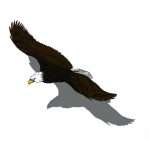This is the second in a series of articles about designing a house for the western slope of the Sangre de Cristo Mountains in the San Luis Valley. The uniqueness of your site is key, wherever you are, to designing a loveable, livable house.
Sustainability and low maintenance are priorities for me in this series. This is not about new or experimental features in home design, because although fascinating, they can require a lot of time and attention. Instead, I am looking for tried-and-true materials and designs that will require little maintenance while taking advantage of natural local benefits like abundant sunshine, low humidity and lots of air movement to heat and cool.
Why devote a whole article to siting? Because once a house is placed on a piece of land, it’s there to stay. Choose the site carefully, and it can affect the overall workability and livability of the house.
First, do the very basic: find and mark the corner pins to your property to be sure you’ll be building within the allowable area. If you can’t find the pins, hire someone to do it. Don’t guess. You need to know where they are. Inform yourself of the required setbacks. Now you know your perimeters.
Views and solar exposure are factors that can’t be improved much without cutting trees, something largely discouraged here. Other factors, like proximity to neighbors or the road, can be mitigated with walls and fences. Find a site with good solar exposure and good views (don’t discount Valley views and extraordinary sunsets), then figure your other factors from there.
Other factors are prevailing winds, access to the road, neighbors, vehicular traffic, storm runoff, utility access, big trees, and house profile.
If possible, visit your land at different times of year. Note where the wind comes from, where the snow drifts, whether the arroyos run, how far south the sun rises in the winter and how far north it sets in the summer.

Take a map of your lot with you to the site, plus a compass.Make a dot on the map where you think you’d like to put the house. Stand in that spot on the land and, holding the map so that it lines up with the property’s boundaries, mark where different environmental factors come in.
Use your compass to find south. As in the rest of the northern hemisphere, our solar exposure is to the south. Are there tall trees to the south that will block the midwinter sun (29° at midday)? The early morning sun is desirable if you’re counting on passive solar to warm your house after a cold night. In Crestone, we have mountains to the east; is there a ridge, or trees, blocking your early morning sun? If so, you may want to plan on auxiliary heat for cold mornings.
If you have the good luck to be on a south-facing hill, can you berm the rear end of the house into it for a heating/cooling advantage?
In the San Luis Valley, our prevailing wind comes from the southwest (although that can vary with location), and it’s an important part of our outdoor experience. It can drive you crazy (or at least indoors). It’s nice to have a place to get some refuge from it. Can you get some natural wind block from a hillside or grove of trees? The tricky part here is that the best solar is from the south; the wind comes primarily from south-to-west, so you want to block the wind while staying open to the sun. It’s not always possible; if you must choose, go for the solar. You can always create windblocks.
Where are your most desirable views? Are there views you would like to block out, such as the road, or neighbors?

photo by Keno
Will your house dominate, or fit into the landscape? Although a house atop a treeless rise may give incredible views in all directions and make you feel like King of the Hill, one tucked under the crest of the hill will be sheltered from the wind. And I can’t tell you how much your neighbors will appreciate not having your house as the main feature in their view.
In what direction is the road? Will traffic (noise, dust, loss of privacy) affect you?
Are there any arroyos? They may not run often, but when they do, look out! In a downpour, could the runoff affect your homesite? Can you easily divert the flow with some earth work? Will you need a culvert for the driveway over the arroyo?
Are there substantially-sized trees (trunk diameter 4” or larger) in or near your building site or driveway? Keep in mind that construction will take place not only where the house is, but in a 8’ perimeter around the outside walls. There will be excavation and backfilling, and trucks and equipment can break limbs and compact soil under trees, damaging roots. For the health of the trees (and as a precaution against wildfire) it’s good to choose a site that allows some breathing room between trees and house.
When planning your driveway, make sure to allow enough width (12’ on straightaway, more on curves) for large vehicles, such as cement, fire and propane trucks, to drive between the trees without damaging them. Will you be using municipal water & sewer? Grid electricity? Usually, those are trenched in along either side of the driveway; the further your house is from the road, the greater the initial cost. However, if you love a spot that will require a long driveway, maybe the one-time cost is worth it. Consider snow, ice and mud in length and steepness of driveway. Although it doesn’t happen often, we can get snowfalls of 2’-3’ here (deeper with drifting—remember the wind?), and the spring freeze/thaw cycle can make roadways icy/muddy. You really want the propane truck to be able to come and go when your tank gets low. Also, beware of steep grades that could necessitate leaving your car on the street and walking in.
One last word. If there is a spot that you especially love, consider not building there. Build in a spot that does as well, according to the above criteria. Construction is often a messy and destructive process, and the very magic that you find in a spot can be easily destroyed. Save that spot for sitting, meditation and reflection, far from the hubbub of construction.


